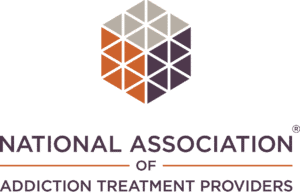Opioid Detox
Prescription Opioids
Oxycontin
Vicodin
(Hydrocodone & Acetaminophen)
Dilaudid
(Hydromorphone)
Roxanol
(Morphine)
Withdrawal Symptoms
Restlessness
Anxiety
Muscle Spasms
Insomnia
Vomiting
Runny Nose
Sweating
Abdominal Cramps
Changes in Blood Pressure
Irritability
Constricted Pupils
Diarrhea
Nausea
Shaking
Agitation
Stages and Timeline
3 to 4 Hours After Last Intake
A person develops anxiety or fear anticipating the upcoming withdrawal symptoms. Some people may have increased cravings.
8 to 10 Hours After
Increased anxiety and restlessness are the hallmarks of this stage. Other symptoms can include nausea, vomiting, sweating, stomach aches, and cravings.
1 to 3 Days After
Most symptoms reach their peak, and a person has intense cravings. Additional symptoms can include shaking, muscle spasms, diarrhea, sleep difficulty, and elevated blood pressure.
Up to 1 Year After
During this period, most acute symptoms no longer persist. However, one may experience mood swings, cravings, unusual dreams, anxiety, depression, irritability, insomnia, and problems with concentration. Usually, the symptoms are mild, but even a minor trigger can make a person relapse.
Abruptly stopping opioids can lead to severe withdrawal symptoms and other health consequences.
Opioid Detox Procedure
Tapering
Detox Medications
Clonidine
A prescription medication used to treat hypertension, attention deficit hyperactivity disorder (ADHD), and sometimes symptoms of withdrawal from certain drugs. It has also been found to be effective in treating opioid addiction by reducing cravings and decreasing the incidence of relapse.
Buprenorphine
Also known as Subutex, it helps shorten the duration of detox. Like methadone, buprenorphine can also be used for long-term maintenance therapy.
Naltrexone
Works by blocking opioid receptors in the brain, making it so that opioids do not produce a high when used. It drastically reduces craving and reduces relapse risk among individuals who have had trouble abstaining from these substances. Studies have also shown that naltrexone can be used safely and effectively for both short-term and long-term medical therapy for those suffering from addiction
Nutritional Support
Death during prescription opioid detox can occur due to dehydration from persistent diarrhea and vomiting. If untreated, severe dehydration can result in high blood sodium levels and heart failure.
Thus, maintaining proper hydration is key to preventing dehydration and related complications. If you have severe dehydration, you may need intravenous (IV) fluids and salts.
Long Term
After completing an opioid addiction treatment program, most people need long-term treatment, including:
- Self-help groups, Narcotics Anonymous (NA) or SMART Recovery
- Outpatient counseling
- Intensive outpatient treatment (day hospitalization)
- Inpatient Treatment
- Screening for depression and other mental disorders
When choosing the most appropriate detox program, it is crucial to consider the required level of care, insurance coverage, and commitment. Silicon Valley Recovery is the most comprehensive opioid detox center to help you at every step of your recovery process.









